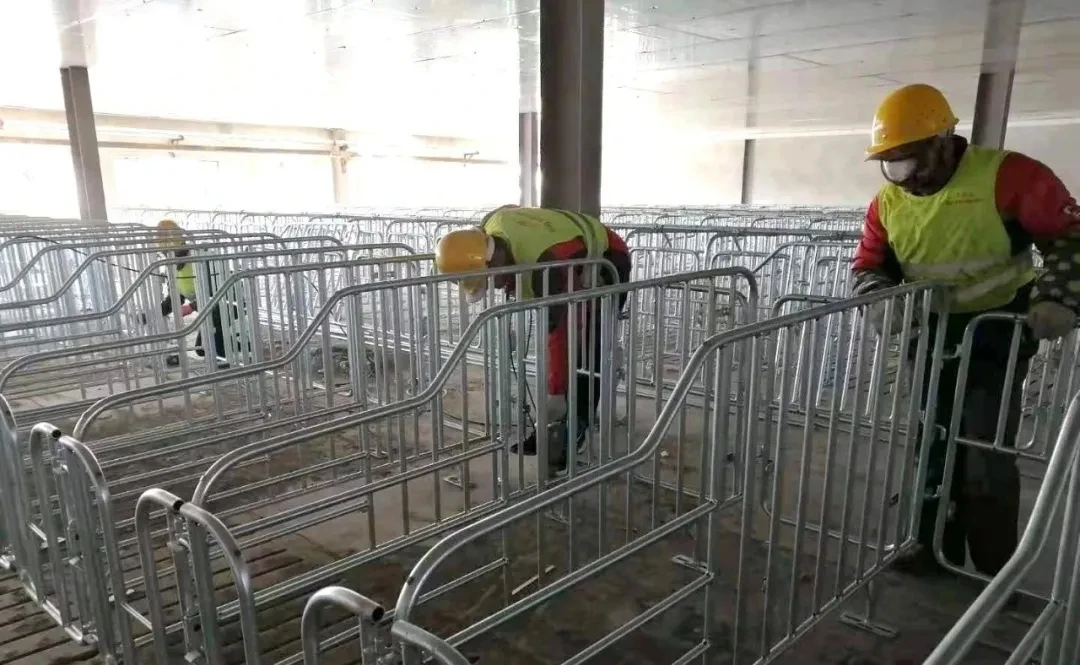Innovative Caging Solutions for Enhancing Broiler Chicken Farming Efficiency and Welfare Practices
Jul . 31, 2024 22:19 Back to list
Innovative Caging Solutions for Enhancing Broiler Chicken Farming Efficiency and Welfare Practices
Cages for Broiler Chickens Considerations and Welfare
The poultry industry has evolved significantly over the years, particularly in the way broiler chickens are raised. Among various systems of poultry farming, the cage system has gained attention for its potential benefits and ethical concerns. This article explores the implications of using cages for broiler chickens, detailing the advantages and challenges associated with this practice.
Understanding Caged Systems
Caged systems for broiler chickens involve housing birds in enclosures that limit their movement. These cages can vary in size and design, but they generally aim to maximize space efficiency and control over the environmental conditions. This system has been primarily adopted to enhance biosecurity, facilitate more accessible management of the birds, and increase production efficiency.
Advantages of Caged Systems
1. Biosecurity and Health Management One of the primary benefits of using cages is the improvement in biosecurity measures. Caged chickens are less exposed to external pathogens and reduce the risk of outbreaks such as avian influenza. By controlling the environment, farmers can more easily manage health risks.
2. Efficient Space Utilization Cages allow for a higher stocking density, meaning more chickens can be raised in a given amount of space. This efficiency can lead to lower production costs and ultimately, lower prices for consumers.
3. Automated Feeding and Watering Systems Caged systems often facilitate the use of automated systems for feeding and watering. These systems ensure that all birds receive the necessary nutrients consistently, promoting optimal growth rates.
4. Easier Waste Management Caged environments enable easier collection and management of waste, which can be particularly beneficial in large-scale operations. Efficient waste management practices can contribute to better hygiene and reduced environmental impact.
cage for broiler chicken

Challenges and Ethical Concerns
Despite the apparent advantages, there are significant ethical concerns surrounding the use of cages for broiler chickens. Critics argue that these systems compromise animal welfare.
1. Restricted Movement Caged chickens experience limited movement, which can lead to physical and psychological stress. The inability to engage in natural behaviors such as stretching, walking, or dust-bathing can affect their overall well-being.
2. Social Interaction Chickens are social animals that thrive on interaction with their peers. Cages can limit this interaction, leading to increased aggression and stress among birds.
3. Public Perception There has been a growing public outcry against the use of cages in poultry farming. Consumers are increasingly concerned about animal welfare and are shifting towards free-range or pasture-raised options, prompting many producers to reconsider their practices.
4. Legislative Changes In response to the concerns about animal welfare, some regions have enacted laws banning or restricting the use of cages for broiler chickens. As legislation evolves, producers must adapt to new standards that prioritize animal welfare.
Conclusion
The debate surrounding the use of cages for broiler chickens is complex, involving a careful balance between production efficiency and animal welfare. While caged systems can offer advantages in biosecurity and resource management, ethical considerations cannot be overlooked. The poultry industry faces a pivotal moment in addressing these concerns, necessitating a shift towards farming practices that respect animal welfare while meeting the demands of consumers. The future of broiler chicken production may lie in finding innovative solutions that enhance both the efficiency of poultry farming and the well-being of the birds raised within these systems. As awareness grows, it becomes increasingly clear that sustainable practices that prioritize animal welfare will not only benefit the chickens but can also lead to a more favorable reception from consumers and society at large.
-
Hot Sale 24 & 18 Door Rabbit Cages - Premium Breeding Solutions
NewsJul.25,2025
-
Automatic Feeding Line System Pan Feeder Nipple Drinker - Anping County Yize Metal Products Co., Ltd.
NewsJul.21,2025
-
Automatic Feeding Line System Pan Feeder Nipple Drinker - Anping County Yize Metal Products Co., Ltd.
NewsJul.21,2025
-
Automatic Feeding Line System - Anping Yize | Precision & Nipple
NewsJul.21,2025
-
Automatic Feeding Line System - Anping Yize | Precision & Nipple
NewsJul.21,2025
-
Automatic Feeding Line System-Anping County Yize Metal Products Co., Ltd.|Efficient Feed Distribution&Customized Animal Farming Solutions
NewsJul.21,2025






